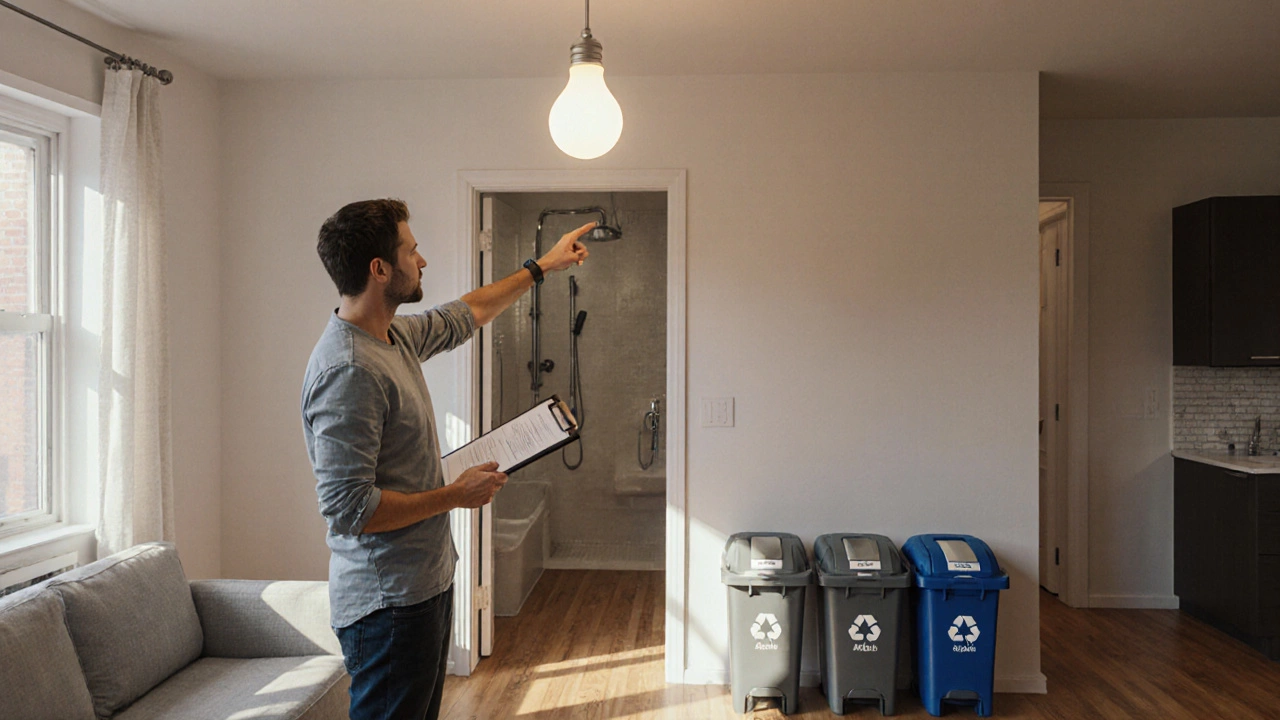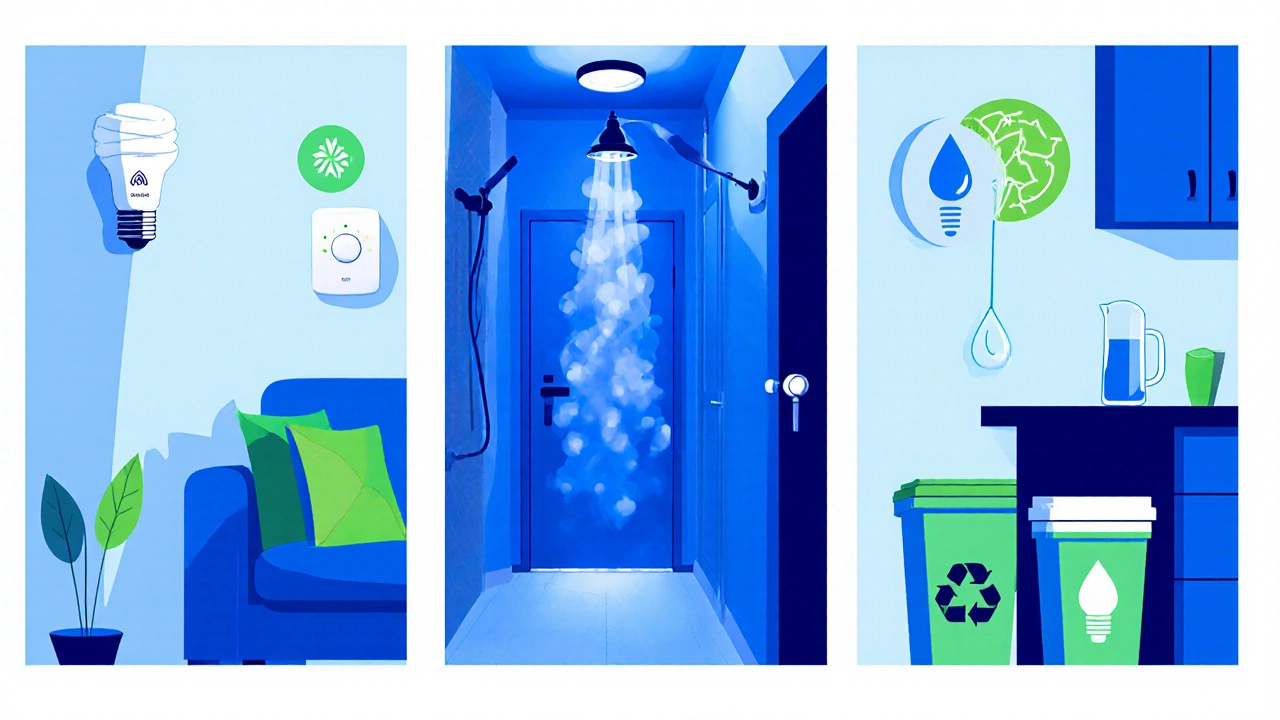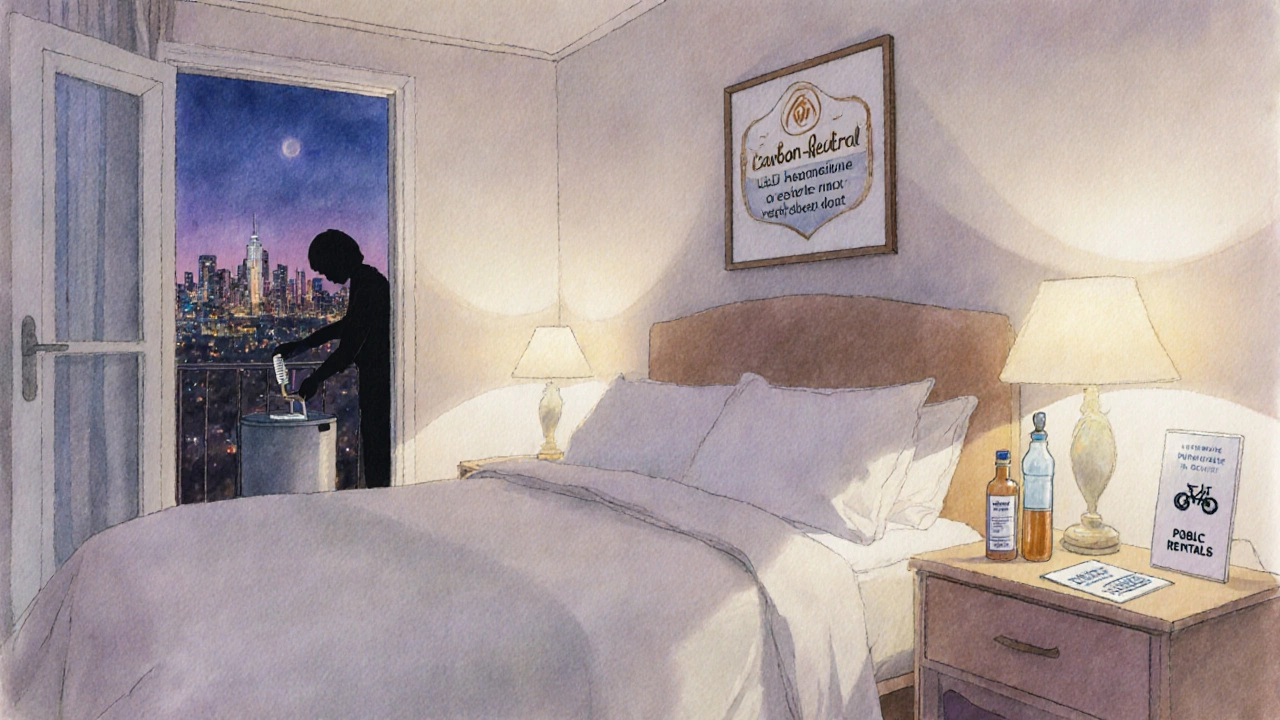Make Your Airbnb Eco-Friendly: Simple Steps for Sustainable Hosting

Eco-Friendly Airbnb Upgrade Planner
Your Current Impact
Estimate your current monthly utility costs for a typical Airbnb stay.
Projected Savings
See how eco-upgrades can reduce your costs over time.
Select Upgrades to Include
Upgrade Summary
Select upgrades to see a detailed summary of potential savings and impact.
Want to turn your listing into an Eco-friendly Airbnb that attracts conscious travelers and cuts costs? You don’t need a massive remodel - just a series of smart, sustainable tweaks. Below you’ll find a complete playbook, from quick wins to deeper changes, that any host can implement.
Quick Takeaways
- Start with a simple audit of energy, water and waste.
- Swap to LED bulbs and smart thermostats for instant savings.
- Install low‑flow showerheads and faucets to cut water use.
- Offer recycling bins and partner with a local compost service.
- Use certified green cleaning products and offset remaining carbon emissions.
What Does an Eco‑Friendly Airbnb Look Like?
Airbnb is a global platform that lets hosts rent out homes, rooms or unique stays to travelers. An Eco‑friendly approach focuses on reducing environmental impact while maintaining guest comfort means the property uses fewer resources, generates less waste, and supports local ecosystems.
1. Conduct a Sustainability Audit
Before you buy anything, understand where the biggest impacts are. Walk through the space and note:
- How many light fixtures are on a 60‑watt bulb?
- What type of water fixtures are installed?
- Is there a recycling or compost system?
- Which cleaning products are currently in use?
This audit becomes your baseline for measuring progress.
2. Upgrade to Energy‑Efficient Lighting
Energy‑Efficient Lighting uses LED bulbs and smart controls to cut electricity consumption by up to 80%. Replace all incandescent bulbs with LED equivalents (a 9‑watt LED mimics a 60‑watt incandescent). Add motion sensors in hallways and dimmers in living areas. If you have a thermostat, switch to a programmable or smart model that learns guests’ schedules - you’ll see a 10‑15% reduction in heating/cooling bills.

3. Reduce Water Use with Low‑Flow Fixtures
Low‑Flow Fixtures include showerheads and faucets that limit water flow without sacrificing pressure. Install a 2.5‑gallon‑per‑minute showerhead and faucet aerators; these cut water usage by roughly 30% while keeping guest comfort high.
4. Implement a Clear Recycling and Compost Program
A simple Recycling Program provides separate bins for paper, plastic, metal and glass, making it easy for guests to sort waste can turn trash into a resource. Place labeled bins in the kitchen and bathroom, and post a short guide on what goes where. Partner with your city’s curb‑side compost service for food scraps - many municipalities provide bins at no charge.
5. Switch to Green Cleaning Products
Green Cleaning Products are formulated without harsh chemicals, reducing indoor air pollution and protecting aquatic life are now widely available. Choose EPA‑approved, biodegradable cleaners for surfaces, bathrooms and floors. Keep a small stock of reusable microfiber cloths - they clean effectively and cut down on paper towel waste.
6. Offer Sustainable Amenities
Small touches reinforce the eco‑message:
- Reusable water bottles or a filtered pitcher.
- Organic, locally sourced toiletries (shampoo bars, bamboo toothbrushes).
- Information cards about nearby public transport, bike rentals, and walking routes.
7. Offset Remaining Carbon Emissions
Even after all upgrades, some emissions remain - especially from guests’ travel. Purchase carbon offsets from reputable programs that fund reforestation or renewable energy projects. Display the offset badge on your listing; travelers love transparency.

8. Communicate Your Green Efforts Clearly
Update your Airbnb description with keywords like “eco‑friendly”, “sustainable”, and “green”. Include photos of LED bulbs, recycling bins, and organic toiletries. Guests often filter searches for “green” properties, so clear labeling boosts visibility.
Checklist of Eco‑Friendly Actions
| Action | Impact | Cost (CAD) |
|---|---|---|
| Replace all bulbs with LEDs | ≈80% less electricity | ≈$150 |
| Install smart thermostat | 10‑15% heating/cooling reduction | ≈$200 |
| Low‑flow showerheads & faucet aerators | 30% water savings | ≈$100 |
| Provide recycling & compost bins | Diverts up to 70% waste | ≈$50 |
| Switch to green cleaning supplies | Reduces indoor pollutants | ≈$40/month |
| Purchase carbon offsets (per stay) | Neutralizes travel emissions | ≈$3 per night |
Troubleshooting Common Issues
Guests forget to sort recycling - Place a quick‑reference poster on the fridge and include a friendly reminder in the welcome guide.
LED bulbs flicker with dimmers - Choose dimmers that are rated for LED use or stick with non‑dimmable LEDs and use smart bulbs that adjust brightness via an app.
Water pressure drops after installing low‑flow fixtures - Opt for high‑quality, aerated fixtures that maintain pressure; a simple pressure‑boost pump can also help in older buildings.
Measuring Success
Track utility bills before and after upgrades. A typical 2‑bedroom Airbnb in Vancouver can cut electricity costs by $60-$80 per month after switching to LEDs and a smart thermostat. Water savings often translate to $15-$20 monthly. Use these numbers in your listing to prove value to eco‑savvy guests.
Frequently Asked Questions
Do eco‑friendly upgrades really attract more bookings?
Yes. A 2023 Airbnb host survey showed that listings highlighting sustainable features earned 12% more bookings and could command a 5% higher nightly rate.
What’s the cheapest way to start a green makeover?
Swap out incandescent bulbs for LEDs. The upfront cost is low, and the energy savings show up on the next bill.
Are there any certifications I should mention?
Airbnb’s "Eco-Friendly" badge is automatic once you select “energy‑efficient appliances” and “recycling available” in the amenities section. You can also add the LEED or Green Key badge if your property qualifies.
How do I handle guests who don’t recycle?
Provide clear signage and a short note in the welcome guide. Most guests appreciate guidance and will follow it when it’s easy.
Can I offset my listing’s carbon footprint without extra cost to guests?
Yes. Many hosts include the offset cost in their nightly price. It’s a small addition (usually $2‑$4 per night) that can be marketed as a “green surcharge”.